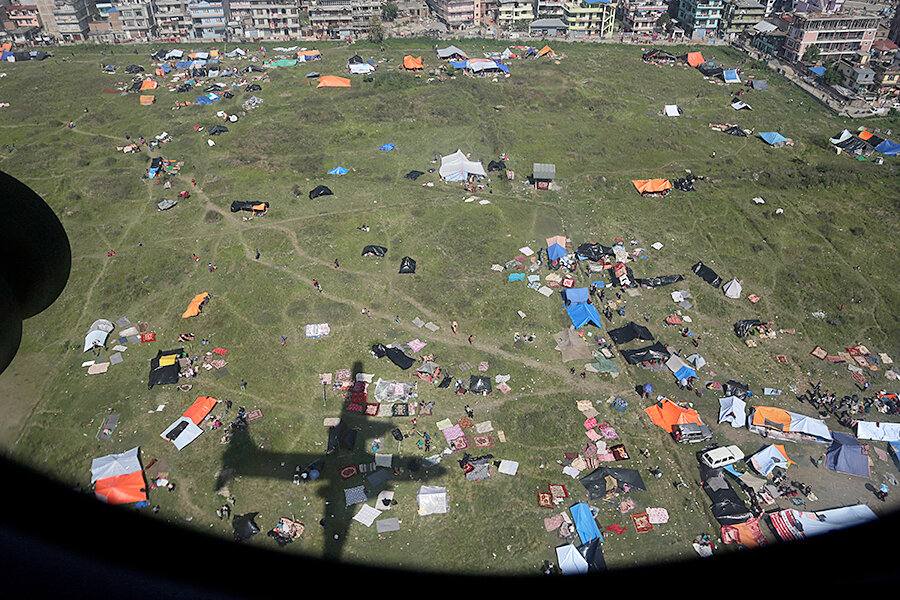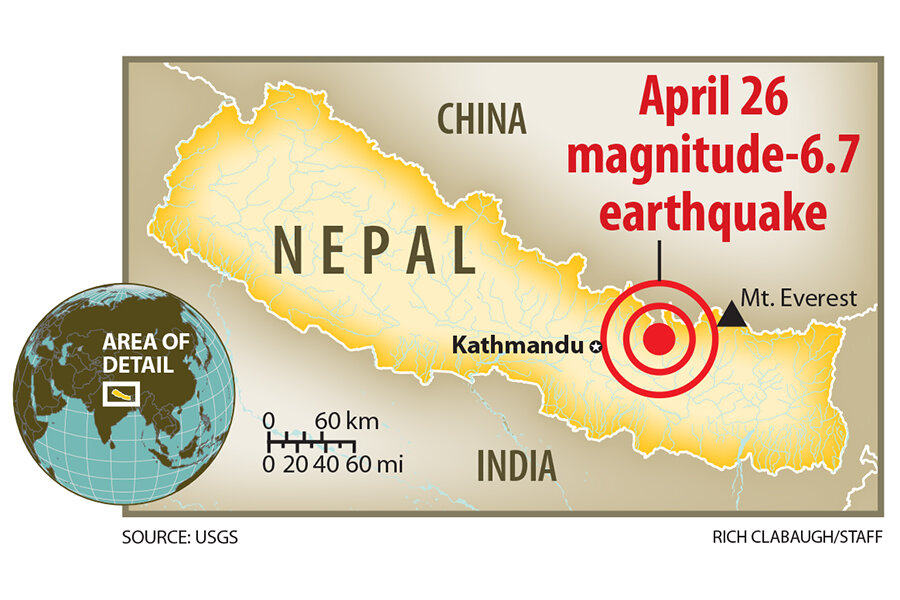How the US is helping Nepal after the earthquake
Loading...
Secretary of State John Kerry announced Monday that the United States will send an additional $9 million in relief to Nepal after the country was devastated on Saturday by a 7.8-magnitude earthquake outside the capital of Kathmandu. This addition brings the total amount of US disaster assistance to Nepal to $10 million.
"Tragedies of this magnitude really underscore that in today's world, next door is really everywhere,” Secretary Kerry said Monday during a joint press conference with his Japanese counterparts in New York. “We are working very closely with the government of Nepal to provide assistance and support.”
About 70 workers and humanitarian personnel with the US Agency for International Development (USAID), along with 45 square tons of supplies, are expected to arrive in Nepal Monday night, TIME magazine reported.
Meanwhile, two teams of American Green Berets that were already in Nepal for a joint training mission with the Nepalese military have been reassigned to assist with earthquake rescue efforts. The two teams of 12 soldiers are experts in high-altitude and medical training and will be joining rescue missions around the Everest base camp, NBC News reported.
Another US military contingent that was in the country for joint disaster preparedness training is now helping coordinate relief and rescue work in the country’s emergency operations center.
The US assistance is part of a global effort to provide relief and prevent a wider humanitarian disaster in the wake of the earthquake.
Japan will send about $8 million in aid to Nepal, officials confirmed Monday. The British government announced Sunday that $7.5 million had been made available to charities working in the country. Norway has promised about $4 million in aid, and other European countries, such as Germany, France, and Spain, have pledged to send aid to Nepal as well, The New York Times said.
India and China have also taken prominent roles in relief efforts.
The United Nations said that about 30 international medical and search-and-rescue teams have arrived in the country. The UN is releasing $15 million from its central emergency response fund to help earthquake victims, the Associated Press reported.
The estimated damage from the earthquake in Nepal could cost between $100 million to $10 billion to repair, NBC News said, citing data from the US Geological Survey.
The Nepalese government is coordinating the global response through its National Emergency Operation Center. Government officials have said they need more supplies of food, medicine, and body bags, as well as specialized rescue services, Reuters reported.
The US takes an active role in responding to natural disasters around the world and consistently contributes to reconstruction efforts subsequent to catastrophes. In the wake of the 2005 earthquake in northern Pakistan, the US sent more than 1,000 service members to provide humanitarian relief and delivered relief supplies including food, tents, blankets, and medicine, the US Department of Defense said.
The US also took a lead role in responding to the 7.0-magnitude earthquake that hit Haiti in 2010, and the 2011 earthquake and tsunami in Japan, although some criticism was later leveled against the government for how the Haiti aid was handled.
The UN office in Kathmandu said that the earthquake in Nepal has affected about 8 million people and that rescue and relief efforts could be hindered by the approaching monsoon season.
The death toll has passed 4,000, with the number expected to climb further.









